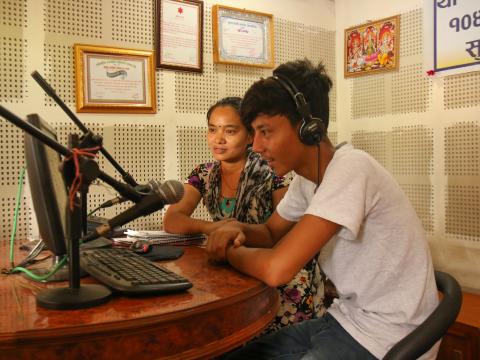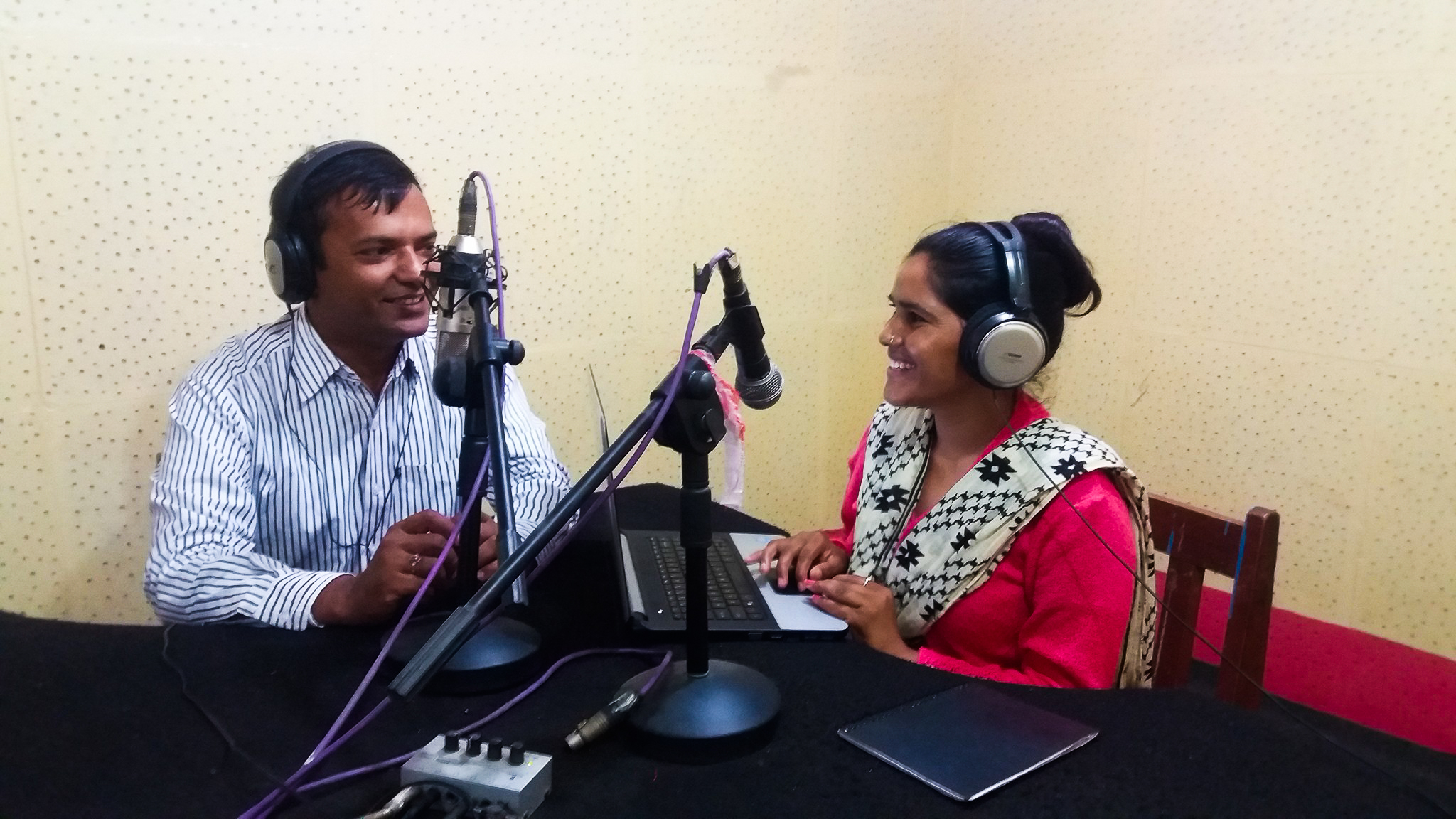Using radio to engage with remote communities during COVID-19 crisis

Radio has become the most popular and effective medium for information dissemination to a larger audience in Nepal (Sharecast, 2018). Use of radio by several humanitarian agencies in Nepal for general and behavioural change messaging substantiates the aforementioned statement. Undoubtedly people in urban areas prefer television and social media over the radio, but a large chunk of Nepal’s population (around two-third of the total population) still live in rural parts of the country and radio is the most accessible and reliable source of information for them (Sharecast, 2018). In the wake of COVID-19 crisis where social distancing is vital, radio enables World Vision and its partners to reach a wide audience with critical information that can be lifesaving, inform change in behaviour and provide a platform for discussion on a range of topics including receiving and responding to feedback on our work.
As an active development and humanitarian partner, World Vision has been joining hands with the Government of Nepal (GoN) in the fight against the coronavirus since the identification of the first few cases in the country. Owing to the changed context, World Vision came up with a new but comprehensive plan to engage and address the needs of the vulnerable children and communities it serves. Starting April 2020, the plan was implemented to scale up the government’s preventive efforts to limit spread of the virus in the country, and support children, women and the most vulnerable families impacted by the coronavirus.
One of the strategic interventions implemented, taking into account social distancing and the lockdown protocols, was engaging with the vulnerable children and communities through community radios. These radios are owned and operated by communities themselves to highlight community issues and act as a bridge to link the issues with policymakers or actors. Besides, the response included direct materials support (distribution of much needed Personal Protective Equipment and other medical supplies and installation of hand-washing stations at health facilities; hygiene kits support to children and quarantine/isolation centres; food support to pregnant and lactating women, among others).
Public Service Announcements (PSAs) on several issues (signs and symptoms of COVID-19, do’s and don’ts during the crisis, available government health services, ways to engage children and continue their learning at home, and identify and report violence and abuse against children) were broadcasted across 77 districts of Nepal in the language all can comprehend easily by the community radios. Upon completion of first 30 days of the plan, a radio programme Hamro Ghar: Hamro Paathshala (our house: our school) was also started to encourage and engage children at home in activities that promote learning when they are away from their school/learning centers due to the prolonged lockdown. Designed with the objective to benefit children, the programme is ongoing and will continue until the academic institutions are resumed.
Initiated in partnership with Association of Community Radio Broadcasters Nepal (ACORAB), the strategic intervention turned out to be effective in changing behaviours of the communities as well as help children continue with their learning process even when their schools/learning centers are closed due to lockdown. Additionally, this initiative also helped to counter rumours and misinformation about the coronavirus, providing correct and accurate information to communities. Post Distribution Monitoring (PDM) of 30 days plan highlights the audiences (64 percent of which were registered children’s families) of World Vision’s preventive messaging were able to comprehend the messages delivered through the PSAs.
“Listening to the PSAs, we learnt we should teach our children small household tasks, motivate them to read storybooks, prepare daily plan and follow during the lockdown so they don’t feel bored at home. Now my children are doing this,” shares Tilak Bahadur, a resident of Kirtipur, Kathmandu.

“Especially for people in rural areas, radio has become a friend they can listen to anytime during lockdown – while inside the house or at field working. People are able to comprehend messages related to COVID-19 easily as they are broadcast frequently in local language and in different forms. Radio has become a reliable source of information,” shares Deepak, Manager of ACORAB.
Note: ACORAB is the largest network of community radios in Nepal with the capacity to reach over 15 million people through its 300 + stations across 77 districts of Nepal. It is also one of the largest networks of community radios in South Asia.
References
- Sharecast. (2018, March 19). Enhancing People’s Participation In Local Radio In Nepal. Retrieved from Sharecast Initiative Nepal: https://www.sharecast.org.np/enhancing-peoples-participation-in-local-radio-in-nepal/
- Sharecast. (2018, June 18). Nepal Media Landscape Survey 2018 Topline Findings. Retrieved from Sharecast Initiative Nepal: https://www.sharecast.org.np/224-2/